Interview
How to make bao buns...Mr Bao founder Frank Yeung's expert tips
12 Feb 2024
8m
Wondering how to make bao buns, what to serve with bao buns or how to steam them? Well, wonder no more.
We've only gone and quizzed a certified expert in everything to do with the Chinese favourite, so you can knock them up at home without any glitches.
There are a number of factors to consider when making bao buns at home, so we enlisted Frank Yeung, founder of the hugely popular south London restaurants, Mr Bao and Daddy Bao, to give you all his tips and tricks.
Let's get to it.
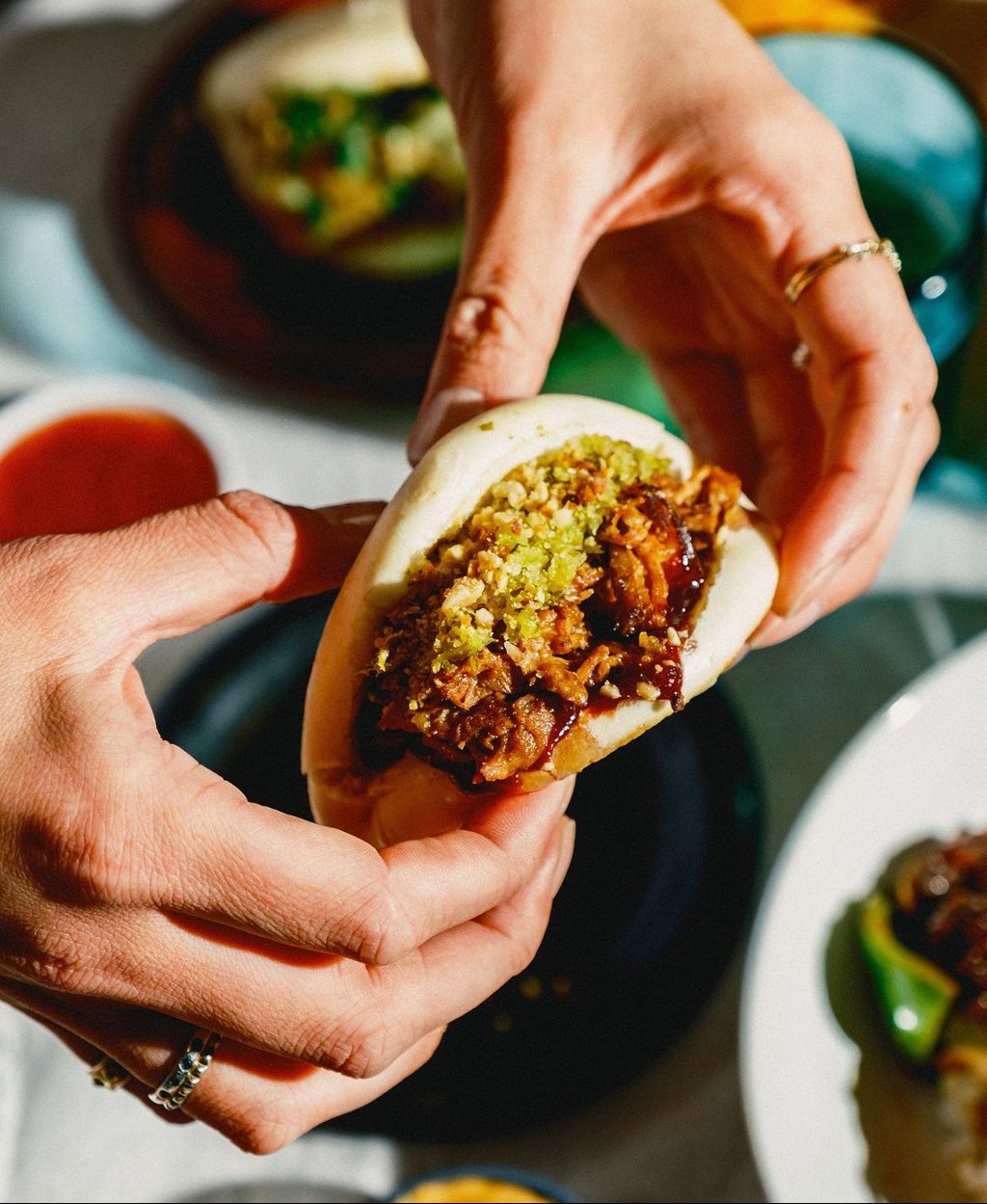
What is a bao bun and where do bao buns come from?
"Bao buns are basically fluffy steamed bread dough, with different fillings inside.
"You can have them open, kind of like a taco or a sandwich, and then you can also have them closed, which is where you can't see what's inside until you bite or cut into it.
"There are lots of varieties from all over [Asia]. You've got baouzi, which is a closed, thinner dough, then char siu bao are more like dim sum, and for dessert you might have a custard bao, which is the same dough but wrapped around a runny or set custard.
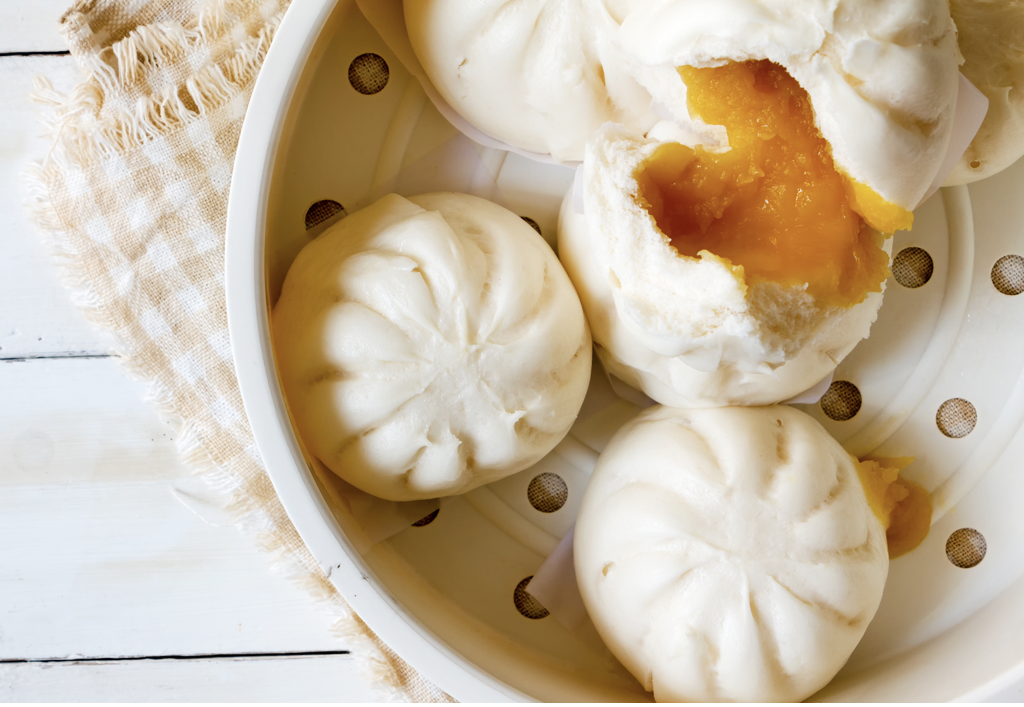
"Our speciality at Mr Bao [and the type you most commonly see on menus in the UK] is the gua bao, and we give the credit to Taiwan for that.
"The perfect gua bao should be light and fluffy, and act as a perfect backdrop or vehicle for wherever it's carrying."
What is a bao bun made of?
"Just like bread, you need salt, water, yeast and flour to make bao buns.
"We used to use milk in them, which is meant to add a smoothness, but with dietary intolerances we've just changed the ratio of water in our recipe to create the same effect, so that there's no milk.
"We also use two types of flour - a rice flour and a white flour - but you can just use normal flour."
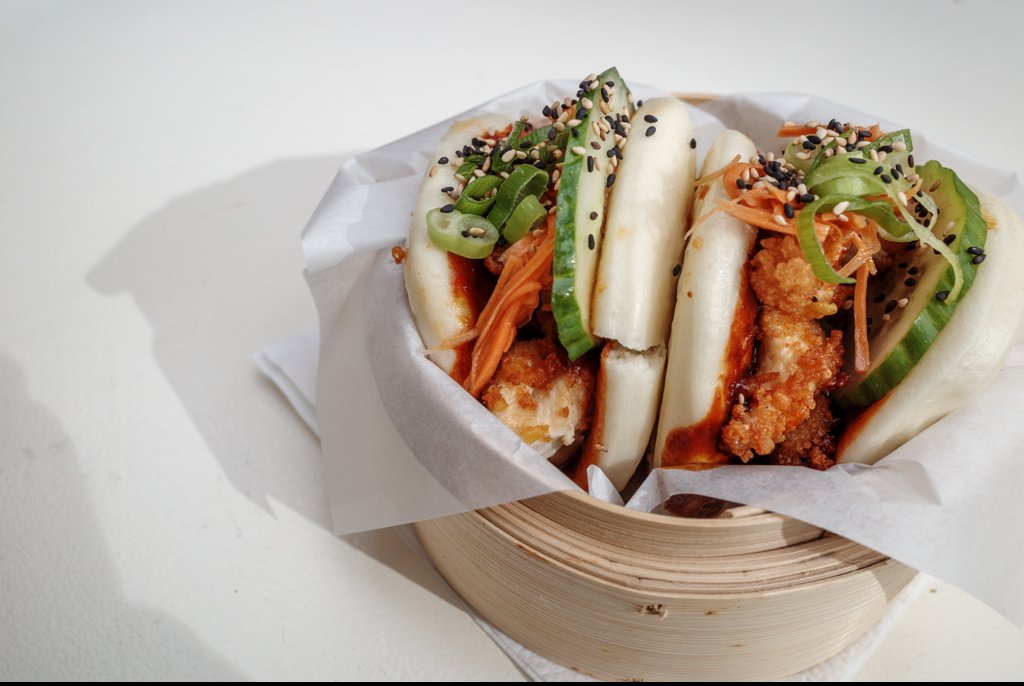
How to make bao buns at home
"Like bread there isn't just one way to make bao buns, so have a play around!
"If I had to give a few tips it would be:
1) Proof your dough twice
Doing the proofs in two helps with the lightness of the buns. After making your dough, set it aside for a very quick proof (maybe two or three hours), then knock it back and knead it for about five minutes, adding a bit of baking powder at that point, to help it rise. Then proof it again until you wanna steam your dough.
2) Play around with proofing times
Proofing is trial and error. You'll have a preference as to how you want your buns to turn out and I'd encourage having a play around, but as a rule you'll be fine following bread guidelines. You want your dough to be springing back when you poke it.
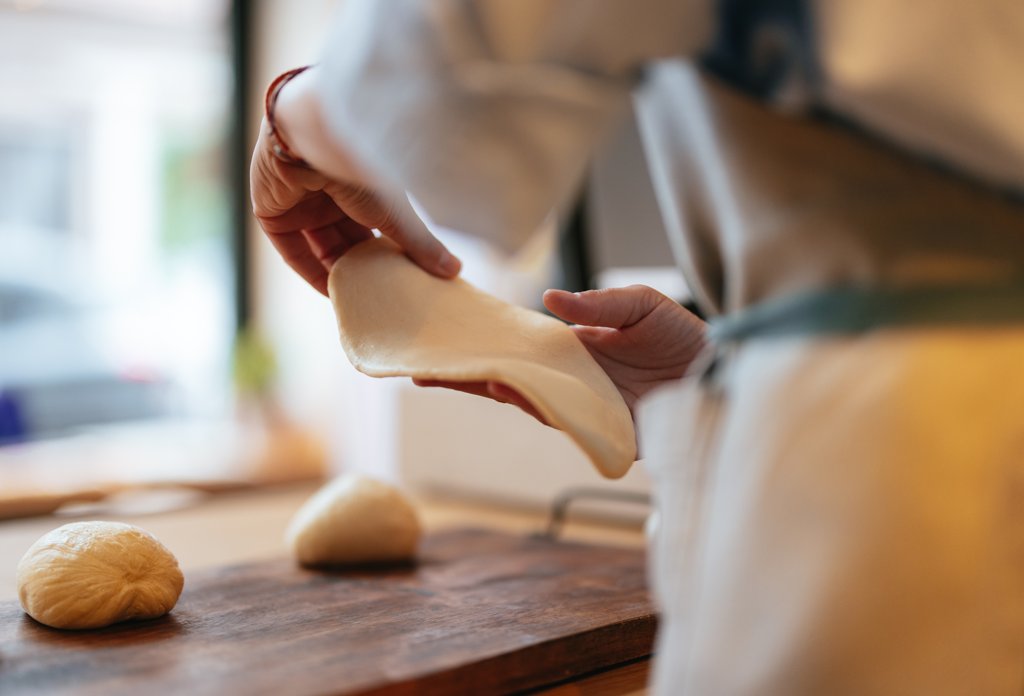
3) Roll your bao bun dough like a pro
We use 60g of dough for each bao. Once its proofed (twice!) and it's springy, then that's the perfect amount for shaping.
If the bao is too much bigger then it'll be some sort of weird Asian baguette, and then if you do it too small it's fine for sliders, which we do sometimes for an event or something [but isn't big enough to eat on it's own].
What you do is, once you've got a dash of flour down on the surface, use the bottom of the palm of your hand on the ball of dough – like, where it joins your wrist.
Then squish into the ball and push it away from you, so you're turning it into a sort of oval running track.
Then you pick up the far side and fold it back on itself, which then makes a mouth shape.
4) Chopsticks can stop the bao bun tearing
Another tip is that if you get a chopstick and just dip it in a tiny bit of oil – you don't want it really oily – you can push the dough away from you and put the chopstick where you want the fold to be.
Then just slide the chopstick out, along the tongue of the mouth, if you want to think of it like that.
That tiny layer of oil just means that once you then steam it, the bao bun will open up really nicely and you avoid the likelihood of tearing.
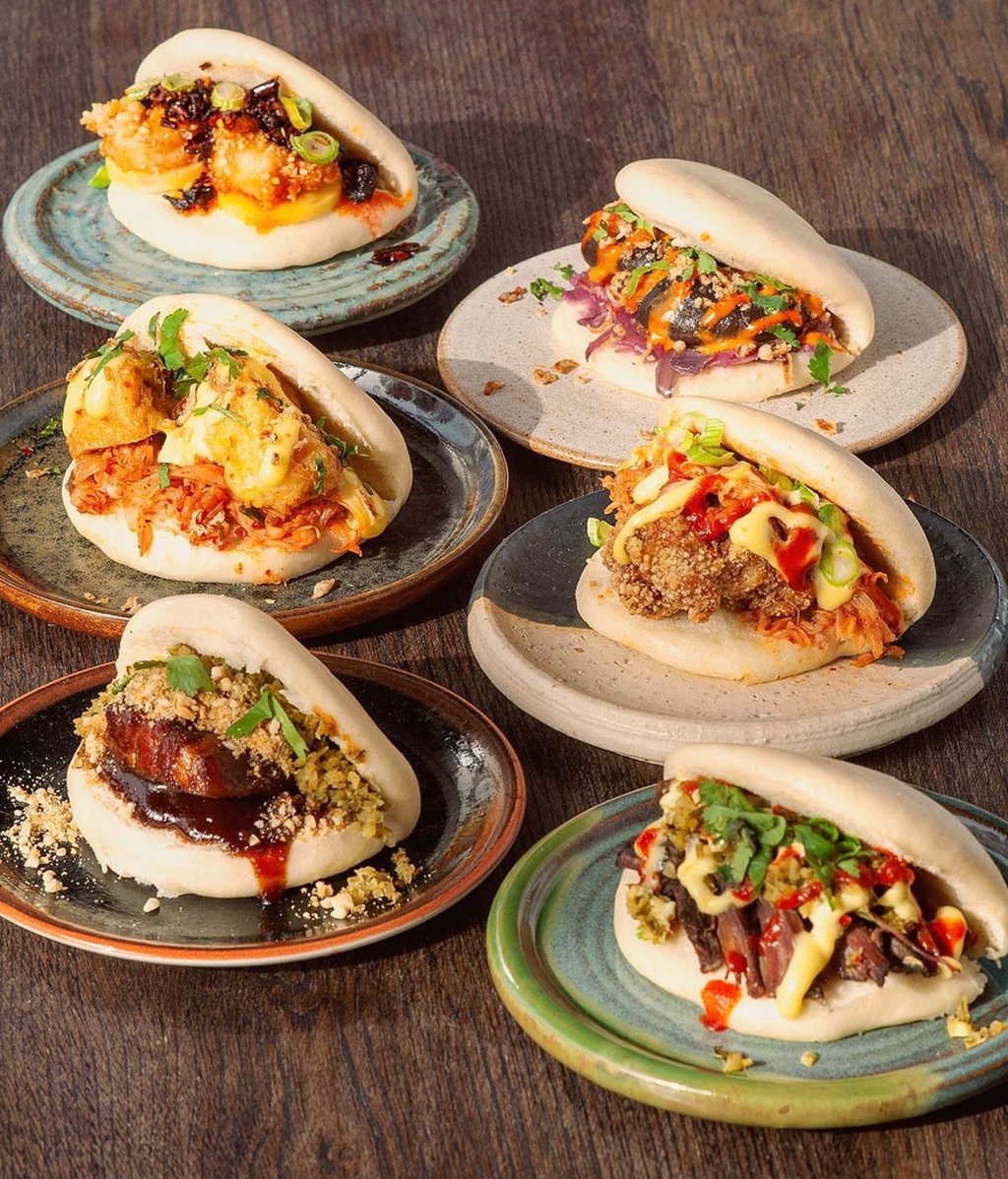
5) Don't squish your bao bun too thin
You're not trying to make a thin pizza base, here. You want a big chunky tongue, and then you want the top of your bao bun to be chunky as well.
This also means that when you come to fill it, the bao will look nice and full and present better.
Proportions work better as well, when it's all rounded and bulbous and cute. It should kind of look like it's pouting!"
How to steam bao buns and how long for?
"If you put your bao buns in the fridge, bring them up to temperature before you steam them.
"Then, they usually take 6-8 minutes depending on the steamer.
"[Make sure it's] not too hot as well, by which I mean around 82 to 85 degrees celsius, but with with a high humidity.
"A bamboo steamer tends to hold high humidity without needing to be too high.
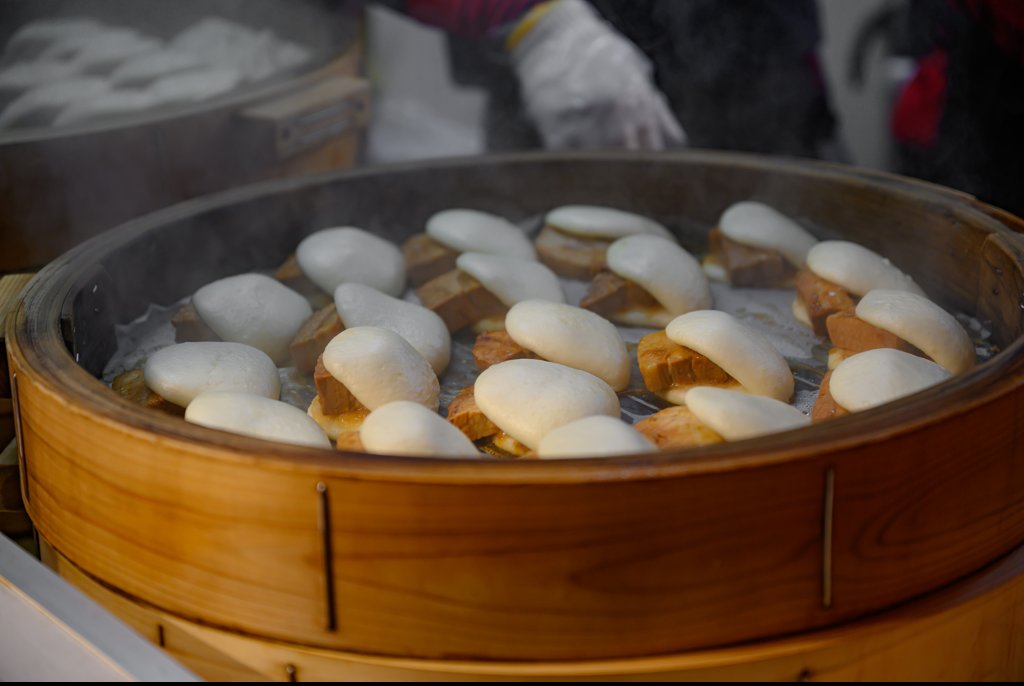
"You can tell the buns are done by giving them a quick poke, again.
"You want it nice and puffy, and they should still be bouncing back. Obviously, they should be piping hot and they should have expanded in size – around 50 percent, or thereabouts."
How to make bao buns without a steamer
"I'd say you can't, really, because I guess the difference between a bao bun and some sort of speciality white bread is the really wet heat from the steam, as opposed to a dry heat from the oven.
"While you do need a steamer you can cobble one together. You could put some water in the pan and put tinfoil over the top, place your baos on there and poke a lot of holes in it and then put a lid on.
"Obviously, a proper steamer is just way better, but there's a way!
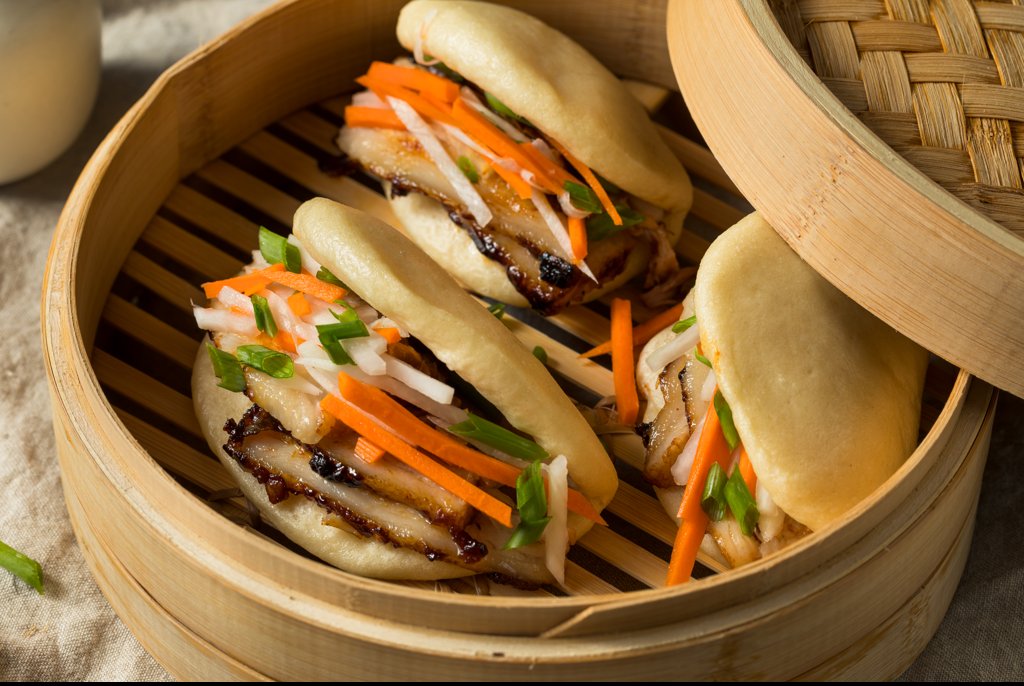
"The bamboo steamer is the best option, and the main reason is that if you put them in a steamer and then the steam goes up, obviously at some point it hits the roof, starts to cool, condense and then drips back down.
"You don't want that, because if you get a hot drip of water back down onto the bun, you end up with marks on the skin and they don't turn out as white.
"But with the bamboo steamer, the roof is also bamboo, and instead of dribbling down it absorbs into the lid, and due to the shape, tends to go down the sides and not onto the buns."
Can you freeze bao buns?
"I totally recommend freezing bao buns.
"They're a faff to make, so I'd say once you've played around and found your recipe just make plenty and chuck them in the freezer.
"They'll be fine in there for a couple of months, and it means you're always a few minutes away from an easy lunch!"
What to put in bao buns
"Asians, and in particular the Taiwanese, really think about textures when they design a dish.
"They like a lot more textures than we like... particularly the chewy and the gooey.
"What has translated across so well in gua bao is that the texture of the dough works for European [palates] as well."
1) Pork belly
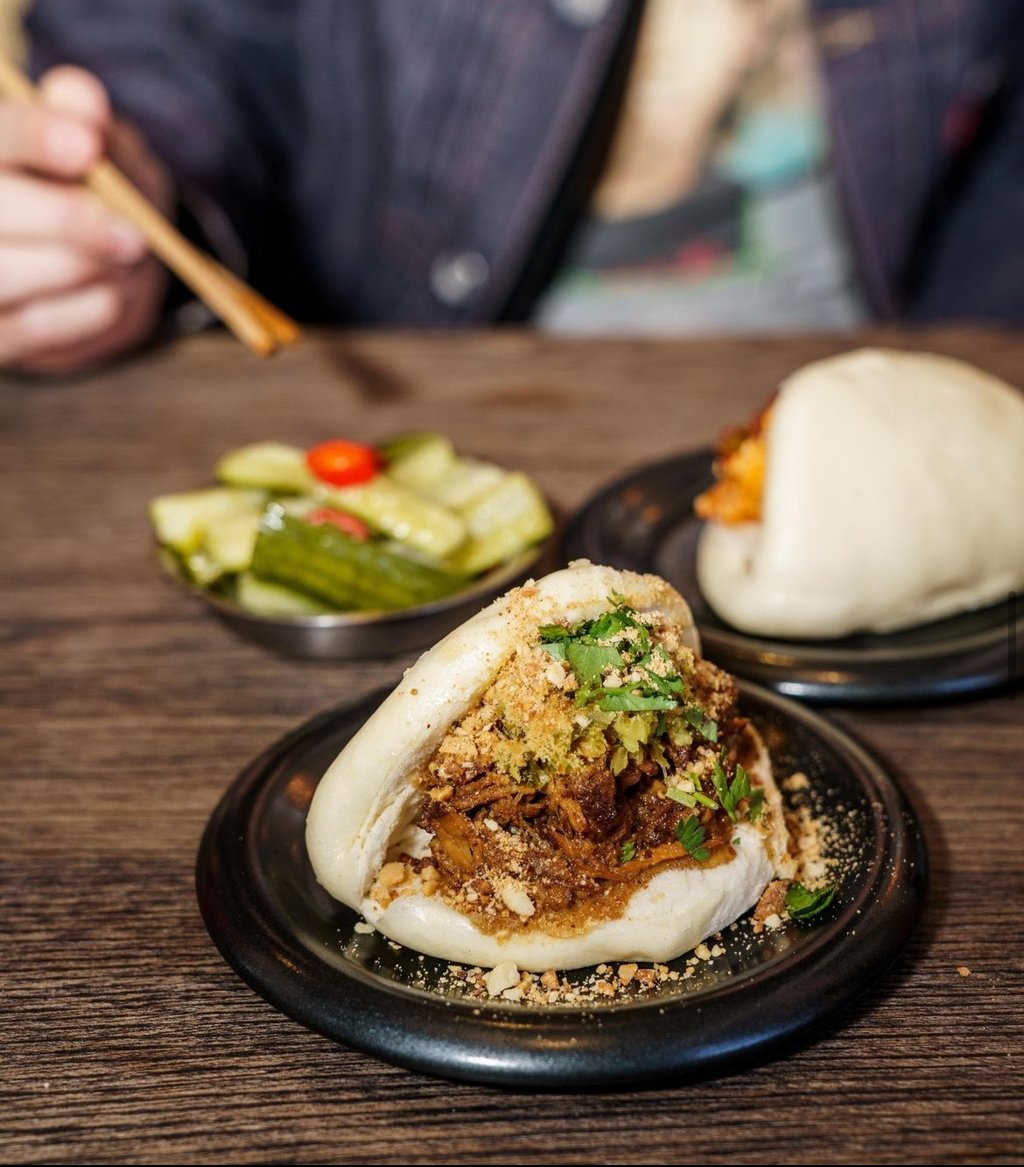
"For the gua bao, the really classic filling would be pork belly.
"You typically braise a whole belly, and then you slow cook it and slice it off to put in your bao.
"You get this shredded pork unctuousness and resistance, and a familiar mouthfeel that comes from [putting this inside] a fluffy bread.
"We tend to use roasted peanuts and a bit of coriander to add one more layer of freshness and flavour, and then another sauce, like a homemade hoisin, so there's a richness as well."
2) Fried food
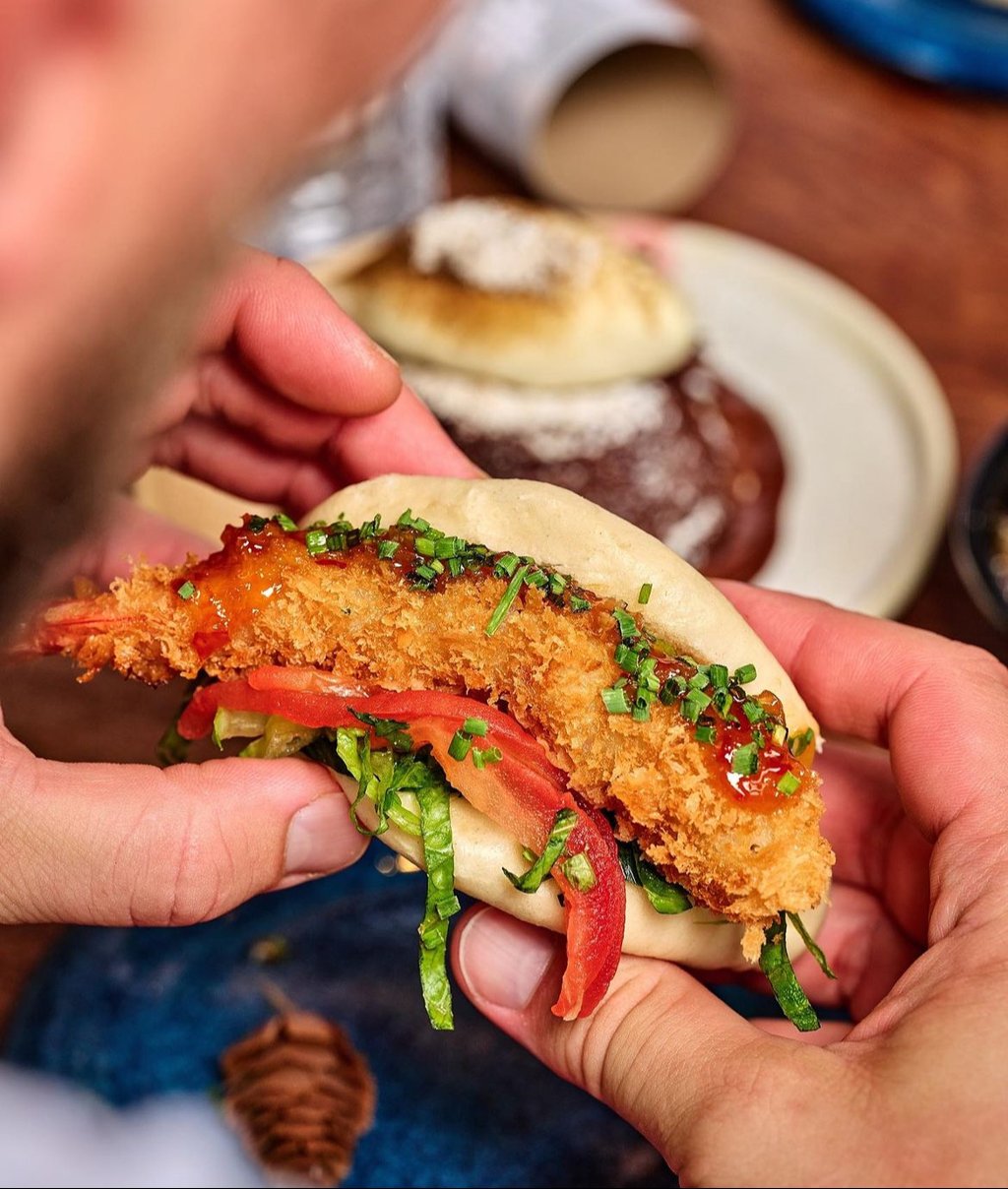
"The pork belly bao has a lot of softness in mouthfeel.
"If you wanted something less traditional, I would do something crispy, and the easiest way to do that would be a fried chicken piece or a fried prawn.
"We've even done Maitaki mushroom, which when fried turns into this really beautiful hand of mushroom.
"Just make a batter and fry [your chosen main ingredient] and the crispness inside works really well with the soft vehicle it comes in."
3) Pickles, salads and slaws
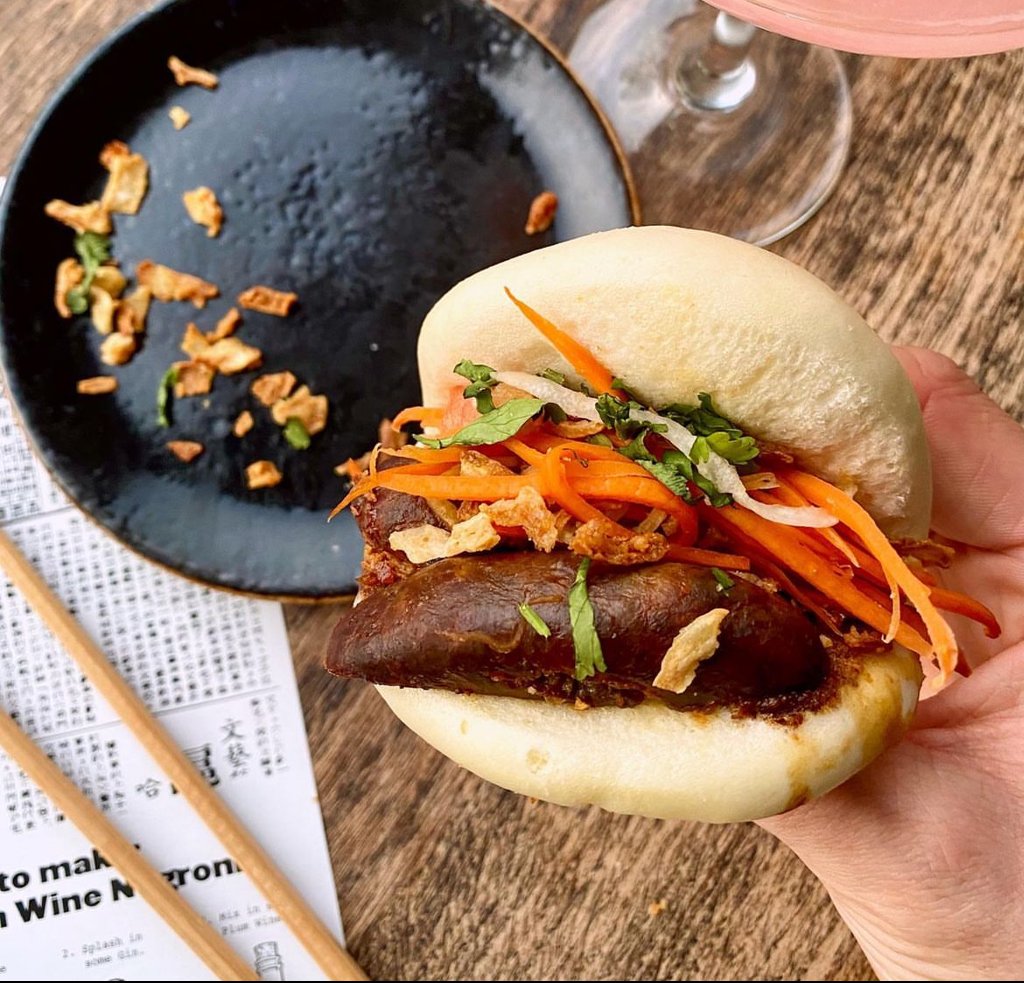
"In all of our baos we add another layer, even if there's a lot of flavours, because it helps to balance it.
"Whatever your filling, I would recommend pickles for a bao bun because they also add a crunch.
"We use a winter pickle in the pork belly bao, and a pickled mooli in our prawn bun. This adds a really nice layer of bite.
"Slaw is also good for balancing flavours and textures. Our beef brisket bao comes with a pretty simple wasabi slaw, and that just works really well with the richness of the slow cooked meat."
4) Get creative!
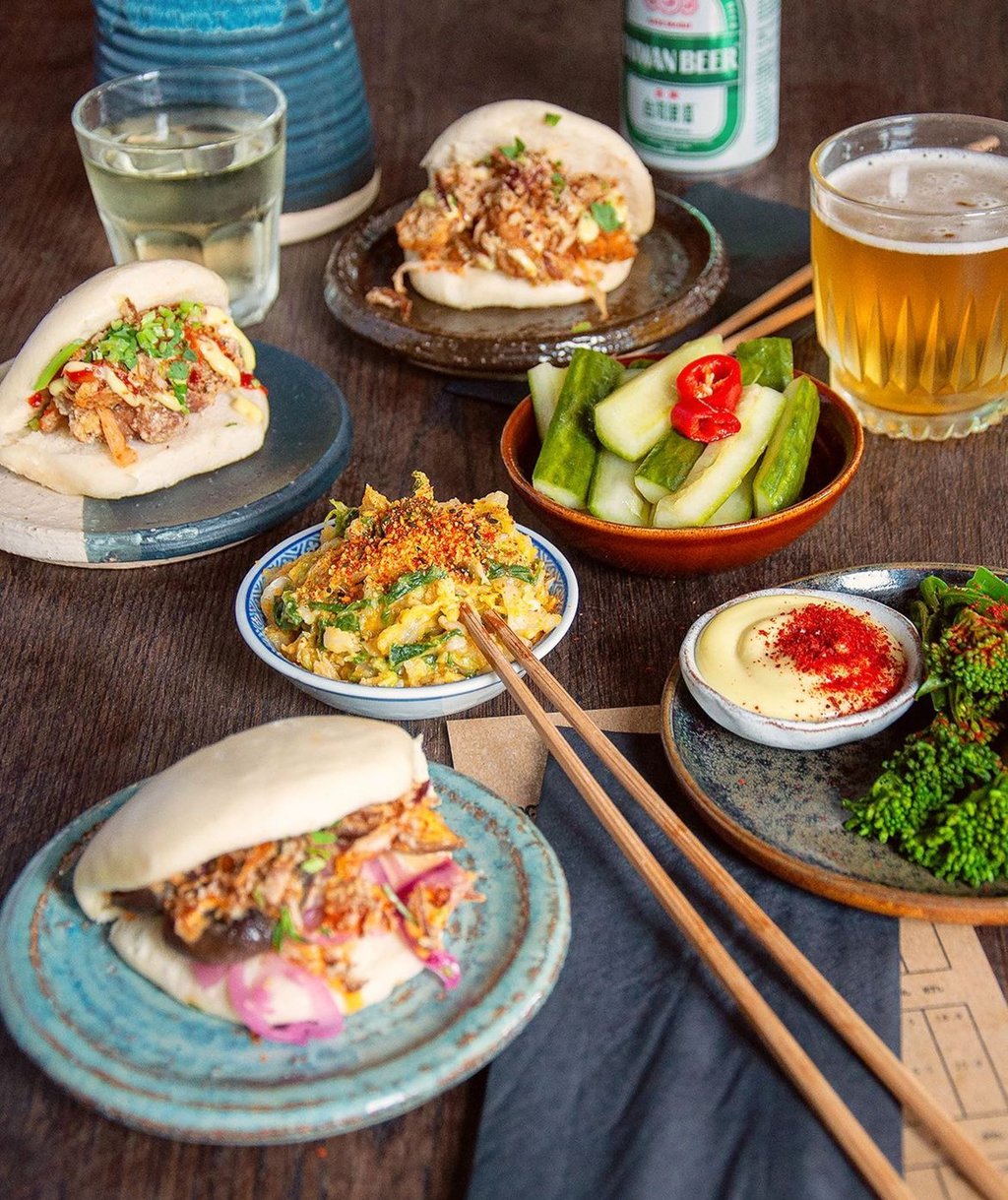
"Food should be fun, and at Mr Bao we don't take it too seriously. We like to have some authentic anchors but we also want people to eat what they enjoy.
"You can put anything in a bao bun really if you balance it properly.
"We even did a weird play on [the French classic] Duck à l'Orange, which came with a confit duck leg, shredded, with a spiced version of the orange sauce. Then, we took the skin off separately and crisped it up to make duck scratchings!
"Just think about your softness, crunch and how the different flavours work together and you can put whatever you want in a bao bun!"
Make sure to check out Frank's restaurants, Mr Bao and Daddy Bao when you're next in south London - and if this has whet your appetite for a Chinese New Year spread, you can check out Daddy Bao's special Lunar New Year menu right here.
Featured image: Mr Bao/ Instagram

.jpg_RVG9qi?tr=w-2560,f-webp,q-70)
.png_2XIXGj?tr=w-2560,f-webp,q-70)
.jpg_qa3BF9?tr=w-2560,f-webp,q-70)